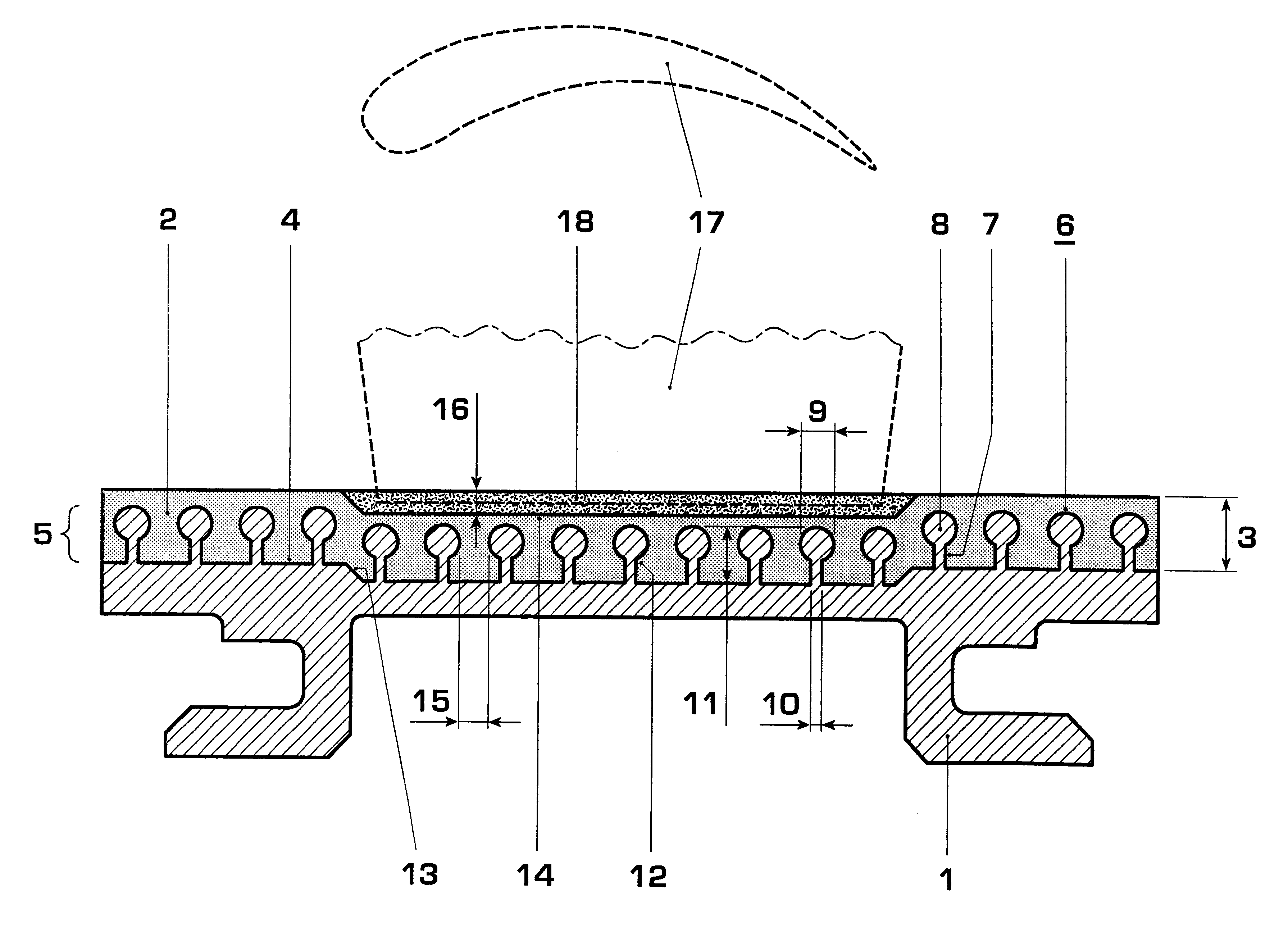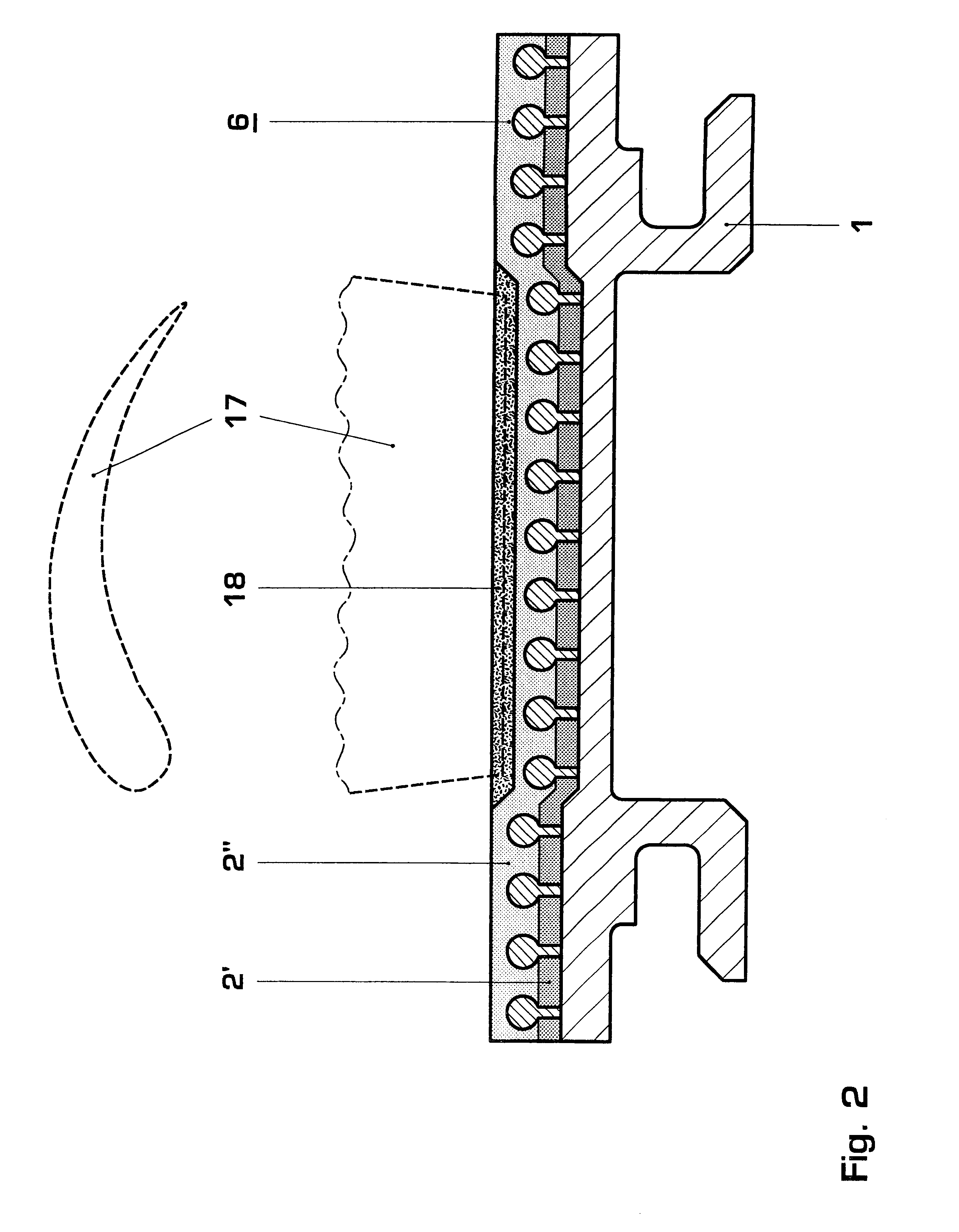Gas turbine seal
a technology of gas turbine and seal, applied in the direction of machines/engines, stators, liquid fuel engines, etc., can solve the problems of wear and other damage to components, the possibility of relatively small layer thickness, and the cost increas
- Summary
- Abstract
- Description
- Claims
- Application Information
AI Technical Summary
Benefits of technology
Problems solved by technology
Method used
Image
Examples
Embodiment Construction
The invention is explained in more detail below with reference to exemplary embodiments and FIGS. 1 to 5.
FIGS. 1 to 5 illustrate sections through four different variants of the gas turbine seal according to the invention. The figures in each case show a blade or vane tip seal.
FIG. 1 shows a blade or vane tip seal of a gas turbine, which comprises a metallic component 1, on which a durable or erosion-resistant ceramic layer 2, for example a thermal barrier coating comprising yttrium-stabilized zirconia of the following chemical composition: 2.5% of HfO.sub.2, 7-9% of Y.sub.2 O.sub.3, <3% of others, remainder ZrO, is sprayed by means of plasma spraying. Application by means of flame spraying is also possible. The layer 2 has a constant layer thickness 3, i.e. it follows the surface contour of the component 1, which as shown in FIG. 1 does not have a planar surface 4, but rather has a step 13. Therefore, at this location the layer 2 has a cavity 14.
To improve the bond strength of the l...
PUM
| Property | Measurement | Unit |
|---|---|---|
| depth | aaaaa | aaaaa |
| thickness | aaaaa | aaaaa |
| thick | aaaaa | aaaaa |
Abstract
Description
Claims
Application Information
 Login to View More
Login to View More - R&D
- Intellectual Property
- Life Sciences
- Materials
- Tech Scout
- Unparalleled Data Quality
- Higher Quality Content
- 60% Fewer Hallucinations
Browse by: Latest US Patents, China's latest patents, Technical Efficacy Thesaurus, Application Domain, Technology Topic, Popular Technical Reports.
© 2025 PatSnap. All rights reserved.Legal|Privacy policy|Modern Slavery Act Transparency Statement|Sitemap|About US| Contact US: help@patsnap.com



